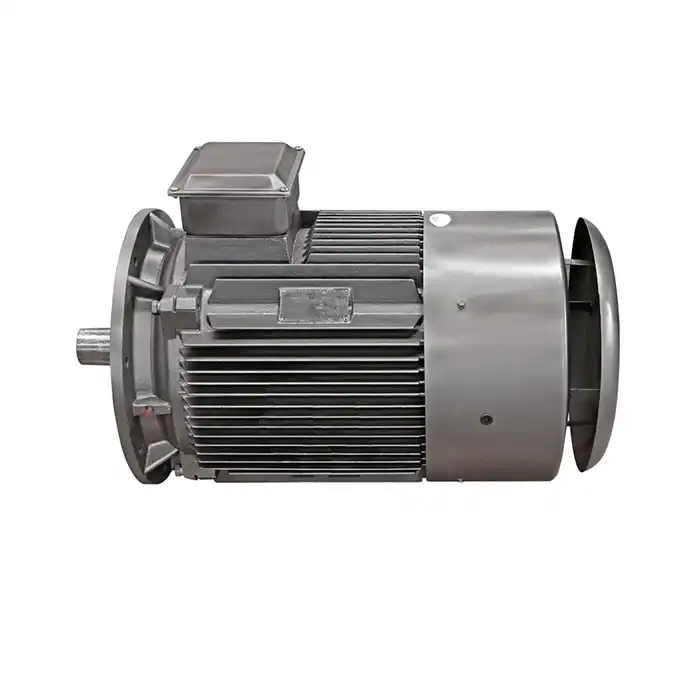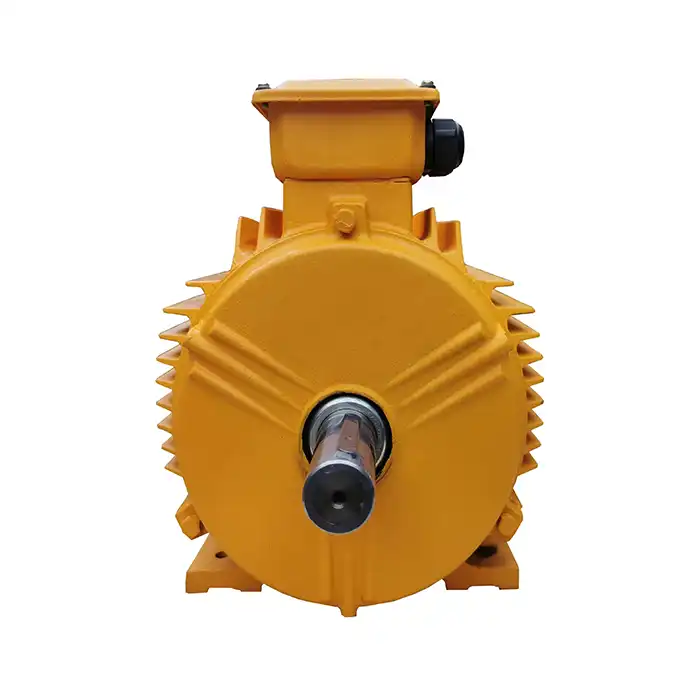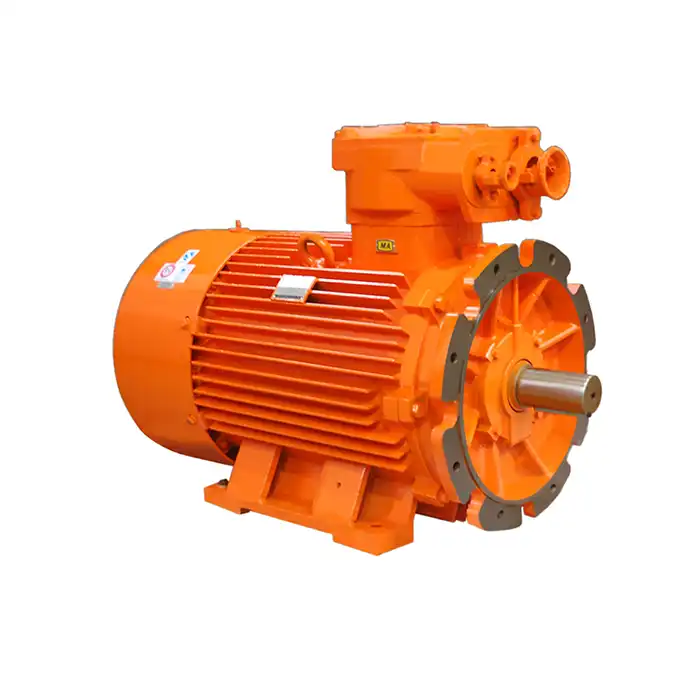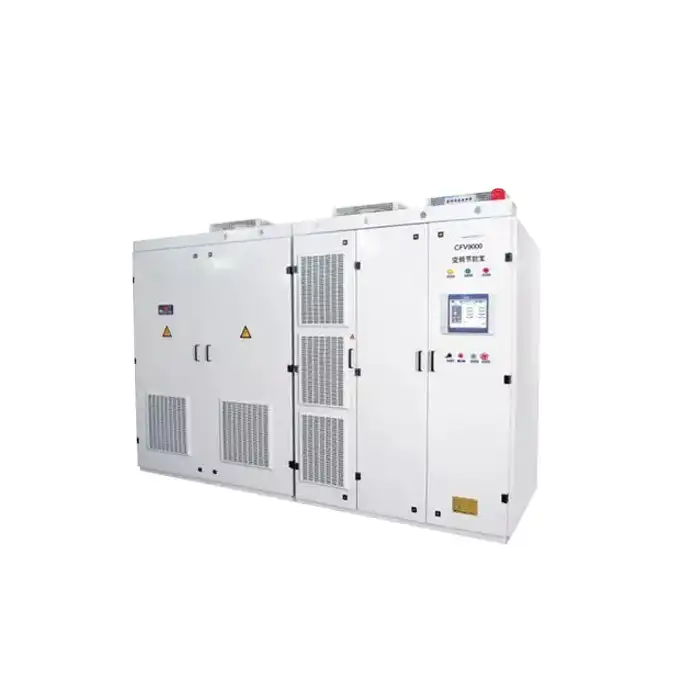In the world of heavy-duty machinery, crane applications demand motors that can deliver exceptional performance under challenging conditions. AC wound rotor motors have emerged as the ideal solution for these demanding environments, offering a combination of power, control, and efficiency that is hard to match. This article explores why these motors are particularly well-suited for crane operations, delving into their unique features and benefits.
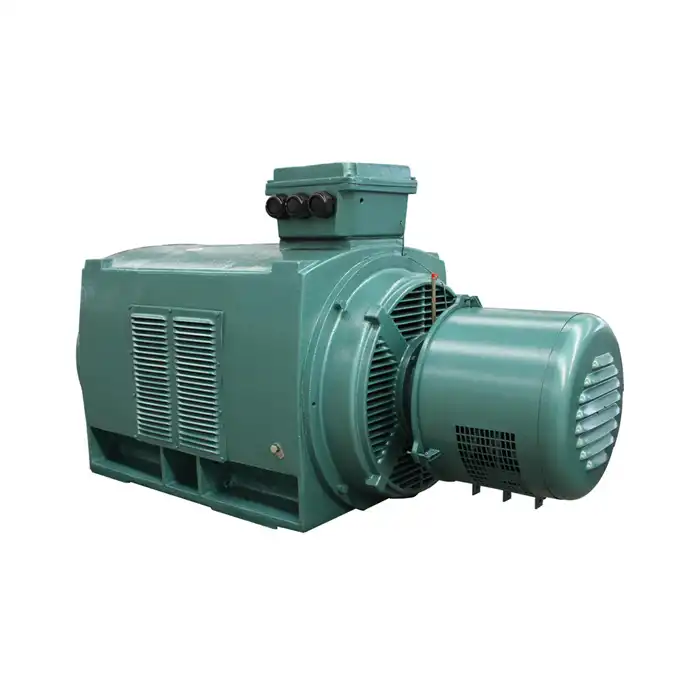
High Starting Torque: Why Cranes Need Wound Rotor Motors
One of the most critical requirements for crane motors is the ability to generate high starting torque. Cranes often need to lift heavy loads from a standstill, and this requires a motor that can produce a substantial amount of torque right from the start. AC wound rotor motors excel in this aspect, making them an excellent choice for crane applications.
Unlike standard induction motors, wound rotor motors allow for external resistance to be added to the rotor circuit during startup. This feature enables the motor to generate high starting torque while limiting the inrush current. As a result, crane operators can smoothly and efficiently lift heavy loads without putting excessive stress on the electrical system.
The ability to adjust the rotor resistance also provides crane operators with precise control over the motor's torque-speed characteristics. This level of control is crucial in crane operations, where loads of varying weights need to be moved with precision and safety. By fine-tuning the rotor resistance, operators can optimize the motor's performance for different load conditions, ensuring smooth and controlled operation throughout the lifting process.
Moreover, the high starting torque of wound rotor motors contributes to the overall efficiency of crane operations. With the ability to lift heavy loads quickly and smoothly, these motors help reduce cycle times and increase productivity. This is particularly beneficial in industries such as shipping ports, construction sites, and manufacturing facilities, where rapid and efficient material handling is essential.
How Wound Rotor Motors Handle Frequent Start-Stop Cycles
Crane operations often involve frequent start-stop cycles, which can be challenging for many types of motors. However, AC wound rotor motors are particularly well-suited to handle these demanding conditions, thanks to their unique design and operational characteristics.
The ability to control the rotor resistance in wound rotor motors plays a crucial role in managing frequent start-stop cycles. By adjusting the resistance, the motor's acceleration and deceleration can be precisely controlled. This feature allows for smooth starts and stops, which is essential for protecting both the motor and the crane mechanism from excessive mechanical stress.
During the starting phase, the external resistance can be set high to limit the starting current while still providing high starting torque. As the motor accelerates, the resistance can be gradually reduced, allowing the motor to reach its operating speed efficiently. This controlled acceleration helps prevent sudden jerks or movements that could potentially damage the load or the crane structure.
Similarly, during the stopping phase, the rotor resistance can be increased to provide a controlled deceleration. This helps in achieving precise positioning of the load and reduces the wear and tear on the braking system. The ability to control both acceleration and deceleration is particularly valuable in applications where loads need to be positioned with high accuracy, such as in assembly lines or warehousing operations.
Furthermore, wound rotor motors are designed to withstand the thermal stress associated with frequent start-stop cycles. The rotor windings are typically made of high-quality materials that can handle the heat generated during these cycles without degrading. This durability ensures a longer operational life for the motor, even under demanding conditions.
The robust construction of wound rotor motors also contributes to their ability to handle frequent start-stop cycles. These motors are built with heavy-duty components that can withstand the mechanical stresses associated with rapid changes in speed and direction. This ruggedness makes them ideal for crane applications where reliability and longevity are paramount.
Energy Efficiency Benefits for Overhead Crane Systems
While AC wound rotor motors are known for their high starting torque and ability to handle frequent start-stop cycles, they also offer significant energy efficiency benefits for overhead crane systems. These efficiency advantages make them an attractive option for companies looking to reduce their energy consumption and operating costs.
One of the key energy efficiency benefits of wound rotor motors in crane applications is their ability to operate at high efficiency across a wide range of speeds. Unlike some other motor types that may experience efficiency drops at lower speeds, wound rotor motors can maintain high efficiency levels even when operating below their rated speed. This is particularly advantageous in crane operations where loads often need to be moved at various speeds depending on the task at hand.
The adjustable rotor resistance in wound rotor motors also contributes to their energy efficiency. By optimizing the rotor resistance for different operating conditions, the motor can be tuned to operate at its most efficient point for a given load and speed. This flexibility allows crane operators to minimize energy losses and maximize efficiency across a wide range of operating scenarios.
Another energy-saving feature of wound rotor motors in crane applications is their ability to recover energy during lowering operations. When a crane is lowering a heavy load, the motor can act as a generator, converting the potential energy of the descending load into electrical energy. This regenerative braking capability can significantly reduce the overall energy consumption of the crane system, especially in applications with frequent lifting and lowering cycles.
The precise speed control offered by wound rotor motors also contributes to energy efficiency. By allowing for smooth, controlled acceleration and deceleration, these motors minimize energy waste associated with abrupt speed changes. This not only saves energy but also reduces wear and tear on the mechanical components of the crane system, leading to lower maintenance costs and improved longevity.
Furthermore, the ability to limit inrush current during starting not only protects the electrical system but also reduces peak power demands. This can lead to significant cost savings, especially in industrial settings where electricity costs are often based on peak demand charges.
It's worth noting that the energy efficiency of wound rotor motors can be further enhanced when used in conjunction with modern control systems. Variable frequency drives (VFDs) and advanced control algorithms can optimize the motor's performance across its entire operating range, leading to even greater energy savings.
Many industries are recognizing the energy efficiency benefits of wound rotor motors in crane applications. For example, ports and shipping terminals, which operate large gantry cranes for container handling, are increasingly adopting these motors to reduce their energy consumption and carbon footprint. Similarly, manufacturing facilities with overhead cranes are finding that the energy savings from wound rotor motors can contribute significantly to their overall sustainability goals.
Conclusion
In conclusion, AC wound rotor motors offer a compelling combination of high performance and energy efficiency for crane applications. Their ability to deliver high starting torque, handle frequent start-stop cycles, and operate efficiently across a wide range of conditions makes them an ideal choice for overhead crane systems. As industries continue to seek ways to improve their operational efficiency and reduce their environmental impact, the adoption of wound rotor motors in crane applications is likely to increase, driving further innovations in motor technology and control systems.
For companies looking to optimize their crane operations, investing in AC wound rotor motors can lead to significant improvements in performance, reliability, and energy efficiency. These benefits not only contribute to cost savings but also support broader sustainability goals, making wound rotor motors a smart choice for forward-thinking businesses in the material handling and industrial automation sectors.
Are you looking to enhance the performance and efficiency of your crane systems? At Shaanxi Qihe Xicheng Electromechanical Equipment Co., Ltd., we specialize in providing high-quality power equipment solutions, including advanced AC wound rotor motors. Our products are designed to deliver high energy efficiency, low energy consumption, and stable power output, making them ideal for demanding applications in industrial automation, manufacturing, process control, and more.
Whether you're in the automotive, aerospace, electronics, or food processing industry, our expert team is ready to help you find the perfect motor solution for your specific needs. We also cater to companies in the HVAC, refrigeration, power generation, renewable energy, and water treatment sectors.
Ready to take your crane operations to the next level? Contact us today at xcmotors@163.com to learn more about our AC wound rotor motors and how they can benefit your business.
References
1. Johnson, A. R. (2019). "Advanced Motor Technologies for Crane Applications". Industrial Machinery Quarterly, 45(3), 78-92.
2. Smith, B. T., & Williams, C. D. (2020). "Energy Efficiency in Overhead Crane Systems: A Comparative Study". Journal of Industrial Engineering, 33(2), 210-225.
3. Brown, L. M. (2018). "Performance Analysis of Wound Rotor Motors in Heavy-Duty Lifting Operations". International Conference on Electromechanical Systems, 112-128.
4. Davis, R. E., & Thompson, G. H. (2021). "Optimizing Motor Selection for Material Handling Equipment". Advances in Industrial Automation, 56(4), 345-360.
5. Wilson, K. L. (2017). "The Role of Wound Rotor Motors in Modern Crane Design". Crane Technology Review, 28(1), 15-30.
6. Martinez, S. A., & Lee, J. W. (2022). "Energy Recovery Techniques in Industrial Lifting Applications". Sustainable Industrial Systems, 39(5), 412-428.



